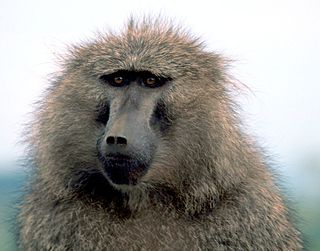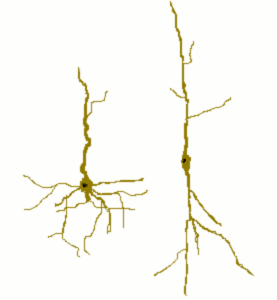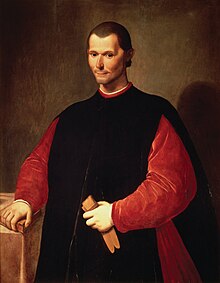
Primatology is the scientific study of primates. It is a diverse discipline at the boundary between mammalogy and anthropology, and researchers can be found in academic departments of anatomy, anthropology, biology, medicine, psychology, veterinary sciences and zoology, as well as in animal sanctuaries, biomedical research facilities, museums and zoos. Primatologists study both living and extinct primates in their natural habitats and in laboratories by conducting field studies and experiments in order to understand aspects of their evolution and behavior.

Cetacean intelligence is the overall intelligence and derived cognitive ability of aquatic mammals belonging in the infraorder Cetacea (cetaceans), including baleen whales, porpoises, and dolphins. In 2014, a study found for first time that the long-finned pilot whale has more neocortical neurons than any mammal studied to date, including humans.

Franciscus Bernardus Maria de Waal was a Dutch-American primatologist and ethologist. He was the Charles Howard Candler Professor of Primate Behavior in the Department of Psychology at Emory University in Atlanta, Georgia, director of the Living Links Center at the Yerkes National Primate Research Center at Emory, and author of numerous books including Chimpanzee Politics (1982) and Our Inner Ape (2005). His research centered on primate social behavior, including conflict resolution, cooperation, inequity aversion, and food-sharing. He was a member of the United States National Academy of Sciences and the Royal Netherlands Academy of Arts and Sciences.

Von Economo neurons, also called spindle neurons, are a specific class of mammalian cortical neurons characterized by a large spindle-shaped soma gradually tapering into a single apical axon in one direction, with only a single dendrite facing opposite. Other cortical neurons tend to have many dendrites, and the bipolar-shaped morphology of von Economo neurons is unique here.
Encephalization quotient (EQ), encephalization level (EL), or just encephalization is a relative brain size measure that is defined as the ratio between observed and predicted brain mass for an animal of a given size, based on nonlinear regression on a range of reference species. It has been used as a proxy for intelligence and thus as a possible way of comparing the intelligence levels of different species. For this purpose, it is a more refined measurement than the raw brain-to-body mass ratio, as it takes into account allometric effects. Expressed as a formula, the relationship has been developed for mammals and may not yield relevant results when applied outside this group.
The evolution of human intelligence is closely tied to the evolution of the human brain and to the origin of language. The timeline of human evolution spans approximately seven million years, from the separation of the genus Pan until the emergence of behavioral modernity by 50,000 years ago. The first three million years of this timeline concern Sahelanthropus, the following two million concern Australopithecus and the final two million span the history of the genus Homo in the Paleolithic era.

Richard Walter Wrangham is an English anthropologist and primatologist; he is Professor of Biological Anthropology at Harvard University. His research and writing have involved ape behavior, human evolution, violence, and cooking.
Dunbar's number is a suggested cognitive limit to the number of people with whom one can maintain stable social relationships—relationships in which an individual knows who each person is and how each person relates to every other person.
Animal culture can be defined as the ability of non-human animals to learn and transmit behaviors through processes of social or cultural learning. Culture is increasingly seen as a process, involving the social transmittance of behavior among peers and between generations. It can involve the transmission of novel behaviors or regional variations that are independent of genetic or ecological factors.
The concept of the evolution of morality refers to the emergence of human moral behavior over the course of human evolution. Morality can be defined as a system of ideas about right and wrong conduct. In everyday life, morality is typically associated with human behavior rather than animal behavior. The emerging fields of evolutionary biology, and in particular evolutionary psychology, have argued that, despite the complexity of human social behaviors, the precursors of human morality can be traced to the behaviors of many other social animals. Sociobiological explanations of human behavior remain controversial. Social scientists have traditionally viewed morality as a construct, and thus as culturally relative, although others such as Sam Harris argue that there is an objective science of morality.

There is much to be discovered about the evolution of the brain and the principles that govern it. While much has been discovered, not everything currently known is well understood. The evolution of the brain has appeared to exhibit diverging adaptations within taxonomic classes such as Mammalia and more vastly diverse adaptations across other taxonomic classes. Brain to body size scales allometrically. This means as body size changes, so do other physiological, anatomical, and biochemical constructs connecting the brain to the body. Small bodied mammals have relatively large brains compared to their bodies whereas large mammals have a smaller brain to body ratios. If brain weight is plotted against body weight for primates, the regression line of the sample points can indicate the brain power of a primate species. Lemurs for example fall below this line which means that for a primate of equivalent size, we would expect a larger brain size. Humans lie well above the line indicating that humans are more encephalized than lemurs. In fact, humans are more encephalized compared to all other primates. This means that human brains have exhibited a larger evolutionary increase in its complexity relative to its size. Some of these evolutionary changes have been found to be linked to multiple genetic factors, such as proteins and other organelles.

The evolutionary origin of religion and religious behavior is a field of study related to evolutionary psychology, the origin of language and mythology, and cross-cultural comparison of the anthropology of religion. Some subjects of interest include Neolithic religion, evidence for spirituality or cultic behavior in the Upper Paleolithic, and similarities in great ape behavior.

Primate cognition is the study of the intellectual and behavioral skills of non-human primates, particularly in the fields of psychology, behavioral biology, primatology, and anthropology.
Neuropolitics is a science which investigates the interplay between the brain and politics. It combines work from a variety of scientific fields which includes neuroscience, political science, psychology, behavioral genetics, primatology, and ethology. Often, neuropolitics research borrow methods from cognitive neuroscience to investigate classic questions from political science such as how people make political decisions, form political / ideological attitudes, evaluate political candidates, and interact in political coalitions. However, another line of research considers the role that evolving political competition has had on the development of the brain in humans and other species. The research in neuropolitics often intersects with work in genopolitics, political psychology, political physiology, sociobiology, neuroeconomics, and neurolaw.
Deep social mind is a concept in evolutionary psychology; it refers to the distinctively human capacity to 'read' the mental states of others while reciprocally enabling those others to read one's own mental states at the same time. The term 'deep social mind' was first coined in 1999 by Andrew Whiten, professor of Evolutionary and Developmental Psychology at St. Andrews University, Scotland. Together with closely related terms such as 'reflexivity' and 'intersubjectivity', it is now well-established among scholars investigating the evolutionary emergence of human sociality, cognition and communication.
Social learning refers to learning that is facilitated by observation of, or interaction with, another animal or its products. Social learning has been observed in a variety of animal taxa, such as insects, fish, birds, reptiles, amphibians and mammals.
David Andrew Whiten, known as Andrew Whiten is a British zoologist and psychologist, Professor of Evolutionary and Developmental Psychology, and Professor Wardlaw Emeritus at University of St Andrews in Scotland. He is known for his research in social cognition, specifically on social learning, tradition and the evolution of culture, social Machiavellian intelligence, autism and imitation, as well as the behavioral ecology of sociality. In 1996, Whiten and his colleagues invented an artificial fruit that allowed to study learning in apes and humans.
The evolution of cognition is the process by which life on Earth has gone from organisms with little to no cognitive function to a greatly varying display of cognitive function that we see in organisms today. Animal cognition is largely studied by observing behavior, which makes studying extinct species difficult. The definition of cognition varies by discipline; psychologists tend define cognition by human behaviors, while ethologists have widely varying definitions. Ethological definitions of cognition range from only considering cognition in animals to be behaviors exhibited in humans, while others consider anything action involving a nervous system to be cognitive.
The expensive tissue hypothesis (ETH) relates brain and gut size in evolution. It suggests that in order for an organism to evolve a large brain without a significant increase in basal metabolic rate, the organism must use less energy on other expensive tissues; the paper introducing the ETH suggests that in humans, this was achieved by eating an easy-to-digest diet and evolving a smaller, less energy intensive gut. The ETH has inspired many research projects to test its validity in primates and other organisms.
Richard William Byrne is an Emeritus Professor in the School of Psychology and Neuroscience of the University of St Andrews.








